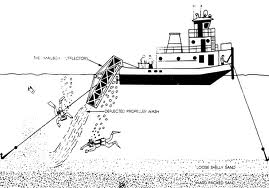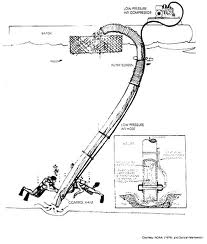Finding and Excavating Shipwrecks
Finding Shipwrecks
Hobby divers often report unusual objects under the water. From this, organisations like the Maritime Museum can investigate the reported sites, whether they find a shipwreck or just a dropped piece of diving gear. Underwater, light is a very unproductive way of seeing the world around you. Nautical archaeologists (people who study underwater archaeology) use sonar technology to see underwater. Computers can use the information to create an image of the sea floor. Once they know where the shipwreck is, they can begin to dig it out.
Excavating Shipwrecks
Airlift
This is a method involving a long pipe being dragged down to the ocean floor and a pump sucking up the dirt. Different sized pipes allow for different jobs. For example, a small pipe is used mainly to dust off or dig around an object, but a big pipe is used to fully excavate a buried ship.
Water Dredge
This is similar to an airlift, in that there is a long pipe going back up to the surface, and there is a hand-held tool brought down to the sea floor that sucks up dirt. The difference, however, is that the water dredge can either be used as an airlift, to simply remove the dirt, or it can be used to collect dirt for later examination. It is also more controllable for the divers and can be used in both deep and shallow waters.
Mailbox
This method involves a large shield being fitted to the back of a ship over the top of the propellor, in order to deflect the current from the propellor onto the sea floor. This helps to clear a layer of dust from a lightly buried shipwreck or other object, however it only works in shallow water.


